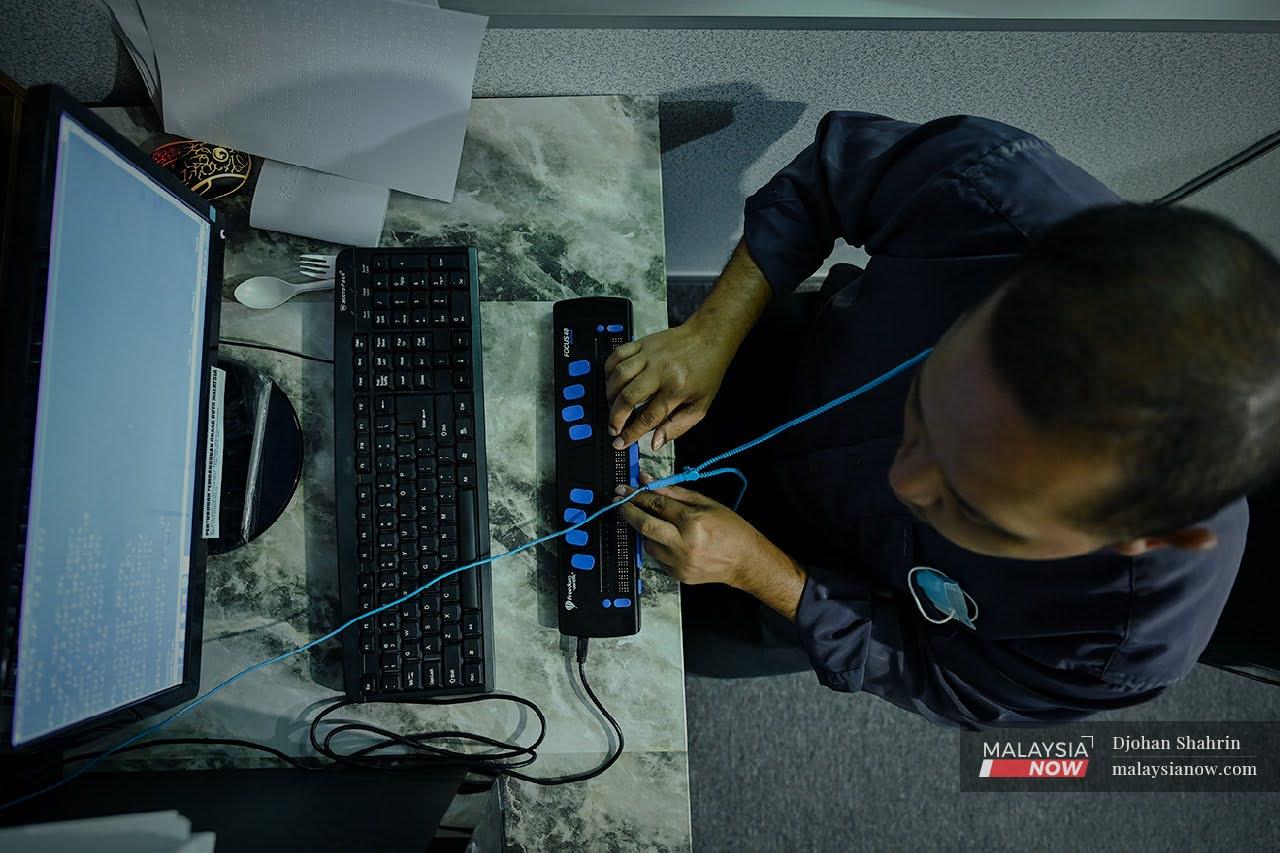The struggles of the sightless in a society blind to their woes
Everyday tasks like withdrawing money are a huge challenge while amenities meant specifically for them are often hijacked by others.
Just In
Across the country, tens of thousands are locked in a quiet struggle to accomplish what others may gloss over without a second thought.
For them, tasks like reading, writing and even withdrawing money from an ATM machine are challenges of considerable proportion yet few in society are aware of the difficulties they face each day.
For the visually impaired, challenges in life begin at an early age.
Even the books they use to attain a basic education cost up to 10 times more than materials used in regular classrooms.
The Development Organization for the Blind Malaysia (PPOBM) has begun an initiative in which it works with local publishers like PTS, Dewan Bahasa dan Pustaka, and Ikim to help meet the needs of students and teachers throughout the country who are blind or otherwise visually impaired.
Together, they translate books into Braille, a form of written language for the blind comprising characters made out of patterns of raised dots that can be felt with the fingertips.
These reading materials are meant to provide blind students from the age of seven to 12 with an education, and to encourage them to broaden their knowledge.

PPOBM president Muhammad Huzaifah Ahmad said the books will be sent to schools throughout the country based on demand and capacity.
“The primary focus is on six- and seven-year-old children because they are still growing,” he told MalaysiaNow.
“Reading materials are important to help them learn and to give them an opportunity to enjoy reading like other children.”
Huzaifah himself suffers from glaucoma, so he knows all too well the need for these efforts.
But they don’t come cheap.
He said a book that would normally cost RM9 can shoot up in price to about RM120 when translated into Braille.
This is because of the high printing cost and the special paper needed.

Translation of books into Braille begins with purchasing the publishing rights for approval.
The Braille words are then created on a computer and edited. “Once the selection process and editing is complete, the material will be printed out and glued together into a book,” Huzaifah said.
Basic amenities
But it’s not just reading and getting an education that’s a challenge. While the rest of society transitions to modern technology in leaps and bounds, those who are visually impaired are easily left behind.
Huzaifah gave the example of touch screens at ATMs. Before touch screens became the norm, he said, ATMs had keypads with Braille dots.
Now, though, those who are blind struggle to withdraw money as they cannot read what is displayed on the screen.
“The innovation is good, but does it meet the needs of everyone?
“It’s not just the blind,” he added. “What if a wheelchair-bound person wants to use an ATM? Are the facilities provided suitable for everyone?”

Sadly, even the amenities provided specifically for blind people are sometimes hijacked by others.
Huzaifah said special walkways dedicated to blind people are more often than not used as a motorcycle parking lot.
Sakinah Hassan, the secretary of PPOBM, said she sees this happen all too often.
“I’ve personally criticised motorcyclists who do so,” she told MalaysiaNow. “But the reason they give is always the same: ‘Who wants to use the walkway?’ or ‘There aren’t any blind people around anyway’.”
Such attitudes make it difficult for blind people to live an independent life, leaving them dependent on others for help, she said.
She said PPOBM also received complaints from parents about the difficulties they faced when schools were closed in the wake of the Covid-19 pandemic and home-based teaching and learning, or PdPR, was implemented instead.
“Blind students need special papers and reference materials to study, but due to the constraints, some of them were left behind.”
Her concern is that blind students will be neglected if the situation continues.
There is also the matter of how many blind people in the country can find employment.
Hufaizah said some 45,000 visually impaired people had registered with the Social Welfare Department in 2017, of which about 20,000 were in their 20s and 30s.
“How many of them have jobs?” he said. “We are well aware of our disability, but those who are responsible for such things should provide opportunities for blind people to find suitable jobs.”
Instead, many end up struggling to make ends meet by selling packets of tissue at eateries, he said.
“It’s tough for them to find a job, so they are forced to find other means of earning an income.”
Subscribe to our newsletter
To be updated with all the latest news and analyses daily.
Most Read
No articles found.
